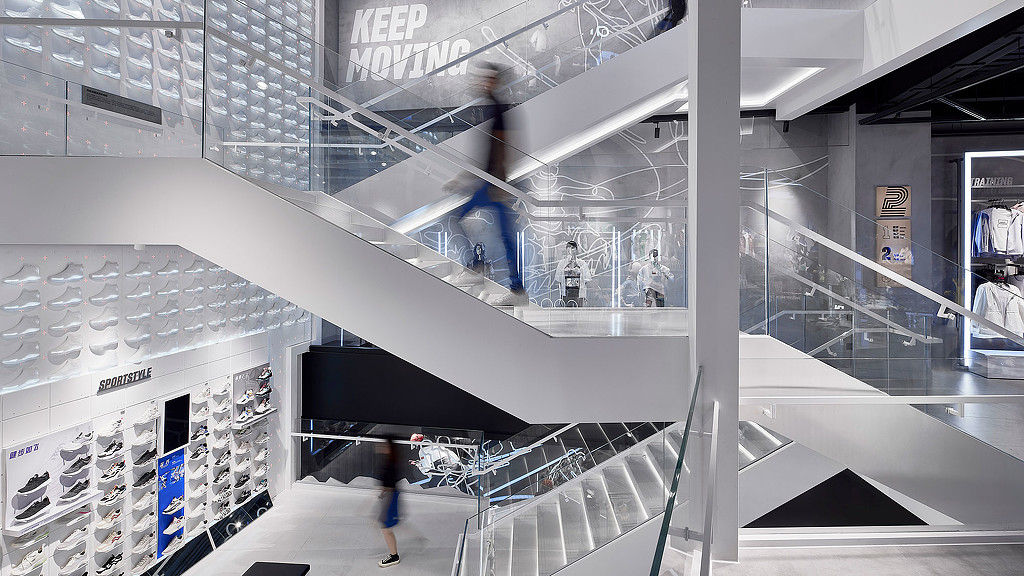Record-Breaking Singles’ Day Sales Indicate a Solid Return to Retail in China
November 30, 2020 | By Richard Chang
The COVID-19 pandemic has dealt a blow to retailers across the globe, many of which were already struggling before the pandemic. But in China, e-commerce sales are rebounding in response to pent up consumer demand.
This growth in online sales in China is seen most clearly on Singles’ Day (11.11), what has become the largest shopping day in the world and the highest grossing shopping day of the year. This year, the event was extended to run over 11 days to build more opportunity for sales. Alibaba reported that the annual sales frenzy broke records again, raking in 498.2 billion yuan (roughly $75 billion). The total includes an earlier three-day period that was added to boost post-pandemic sales. Compared to the same timeframe as last year, this year’s haul represents an increase of 26%.
“China's economy has seen a strong recovery and Chinese consumers’ purchase behaviors have already returned to pre-pandemic levels, if not higher,” Xiaofeng Wang, an analyst with market research firm Forrester, told CNN.
The annual event, which often viewed as a major test of retailers’ promotional creativity and operational logistics, was a resounding success. Brands all over the world can take a cue from the retail trends and opportunities emerging in China and the Asia Pacific region as they look ahead to what’s next.
Luxury sales reboundInternational travel restrictions posed during the COVID-19 pandemic have accelerated online luxury retail in China. According to Alexis Bonhomme, Vice President, Greater China and Asia Pacific for Farfetch, an online luxury fashion retail platform, the main driver for growth in luxury online sales is the “repatriation of the Chinese consumer;” the fact that Chinese consumers are not travelling due to the pandemic means they are shopping at home in China. And this is translating to more domestic online sales. For example, JD Luxury saw year-over-year Singles’ Day sales increase by 138% on November 1, with 127 brands reporting sales 10 times the amount of the previous year in just the first 30 minutes.
Duty-free retail expandsThis acceleration can also be seen in duty-free retail. The Chinese government, in its efforts to control the spread of the virus, has also managed to help drive and support the growth of tax-free shopping. In June, the government proposed a new annual limit of RMB 100,000 ($14,000) per person for tax-free shopping in Hainan, a popular tourist destination that attracts more than 75 million, primarily domestic, tourists every year. The new limit is more than three times the previous RMB 30,000 ($4,200), and forms part of a much broader 60-point plan for the construction of a free trade port on the island.
To incentivize Chinese consumers, the Chinese government is building logistic centers within duty-free zones around international airports, where foreign luxury goods are arriving by airplane, to increase the speed of delivery at scale. The idea is to develop these distribution centers as membership-only experiential retail destinations that would introduce a whole new type of retail platform — one that would offer Chinese consumers a discount, an authentic product, and a unique experience, with state-of-the-art logistics for the fastest delivery possible.
2022: The online tipping pointGrowth of online sales has accelerated due to the lockdown driving consumers to shop online. This year in China, 46.2% of total retail sales are online and 53.8% of sales are in-store. This compares to the global average of 17.5% online and 82.5% in-store. This rise of e-commerce is anticipated to pass the 50% tipping point in 2022, where we will begin to see the largest volume of total retail sales being online.
In China, a large portion of retail supply is pure play, online-native brands or platforms, owned by JD.com and Alibaba. This growth in online sales is likely to continue, albeit at a slower rate, driven by the fact that there are still 583 million people in China who are not yet online, compared to the U.S., which has 39 million people not yet online.
We see four key opportunities for brands to explore in China and the Asia Pacific region:
1. Understanding China’s new luxury consumerGiven the importance of China’s luxury market to future growth, brands should adapt to meet the needs of Chinese consumers. Erwan Rambourg, author of “Future Luxe: What's Ahead for the Business of Luxury,” suggests that the future stability of the luxury goods market is in the hands of the Asian consumer — and more specifically, the rise of the female Chinese middle class. “The future is female, women will not just grow the market: their values and preferences will alter the nature of luxury,” Rambourg says.
2. Livestreaming e-commerceAccording to The Chinese Livestreaming Report and Agency China, livestreaming has become the most widespread video format in China. The growing popularity of live commerce has increased sales and excited a new generation of customers.
JD took advantage of this technology and transformed Singles’ Day into a livestreaming marathon. In fact, this year, JD held over 500 livestream shows with over 300 celebrities and more than 500 CEOs. Additionally, on Nov. 10, JD launched its “Super Livestream Night.” In just six seconds, livestreaming e-commerce sales exceeded $15 million (100 million yuan), demonstrating the power of live video sales .
3. GamificationGamification appeals to younger generations’ lifestyles and competitiveness among their peers, which also translates into regular return visits as community members constantly compete. This allows retailers to continually evolve how they engage with their audience, who are encouraged to return on numerous occasions. The brand loyalty and repeat purchases can lead to higher sales even with lower discounts. For Singles’ Day 2020, JD launched new games for customers to earn “red envelopes” for shopping while having fun, as well as a game where customers could plant a tree in the virtual “JD Farm” and earn a box of real fruit by taking care of the tree.
4. Targeting emerging conscious consumersWhile e-commerce spending continues to surge, we’ve also see a counter trend evolve out of the COVID-19 lockdown, with the rise of “conscious consumers.” According to Jing Daily, state and other media outlets, including Renmin Daily and Xinhua News Agency, have backed an anti-consumerism sentiment that has been growing in China.
This sentiment has the power to influence a generation of young people that has strong spending power and is a top target for luxury brands in China. Conscious consumerism “is destined to arrive, and it will have an increasingly larger impact in the future,” Feng Shi, a senior trend researcher at the qualitative consumer insights agency Youthology, told Jing Daily. “Young people in China know more about consumption and consumerism compared to previous generations…. This generation can easily resonate with others’ reflections and objections.”
To appeal to the conscious consumer in China, Farfetch’s Alexis Bonhomme says that the online luxury fashion retail platform has introduced a collection called “Positively FARFETCH,” which champions designers and products that truly embrace sustainability, sourced from all over the world. Additionally, the retailer has launched “Second Life,” where Farfetch resells consumers’ preowned luxury goods in exchange for Farfetch credit.
These are just a few of the innovative ways that retailers in China are appealing to consumers as travel restrictions ease and the economy begins to recover. Looking ahead, the world of retail is in a state of transformation, and we can only speculate the outcomes that a COVID-19 vaccine, opening of international travel, and the signing of the Regional Comprehensive Economic Partnership (RCEP) will have in the Asia Pacific. Until then, we can all take a cue from how successful brands are better understanding consumers’ changing behaviors and expectations, and deepening connections with shoppers that will last well beyond the pandemic.
For media inquiries, email .

